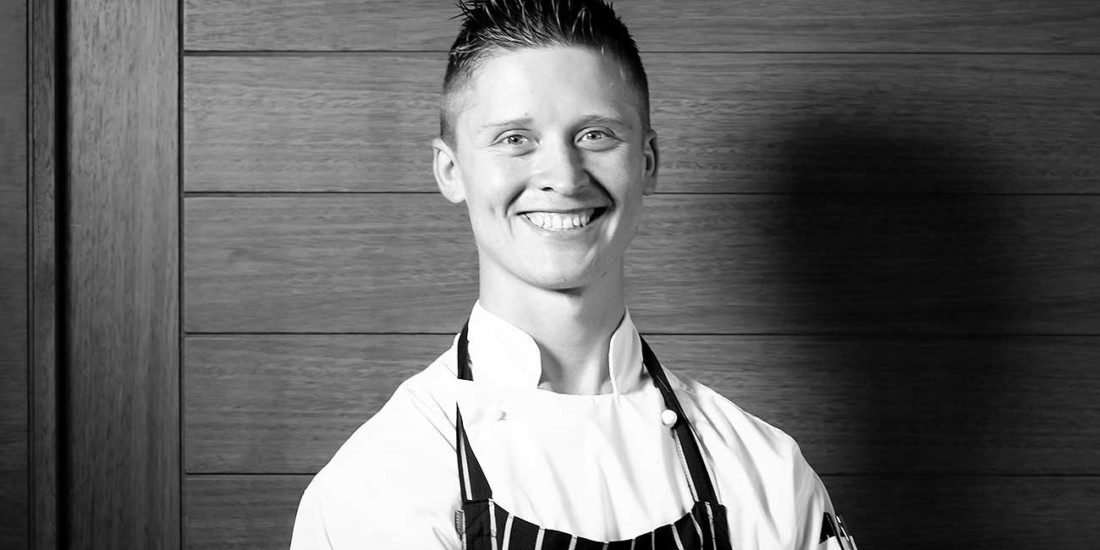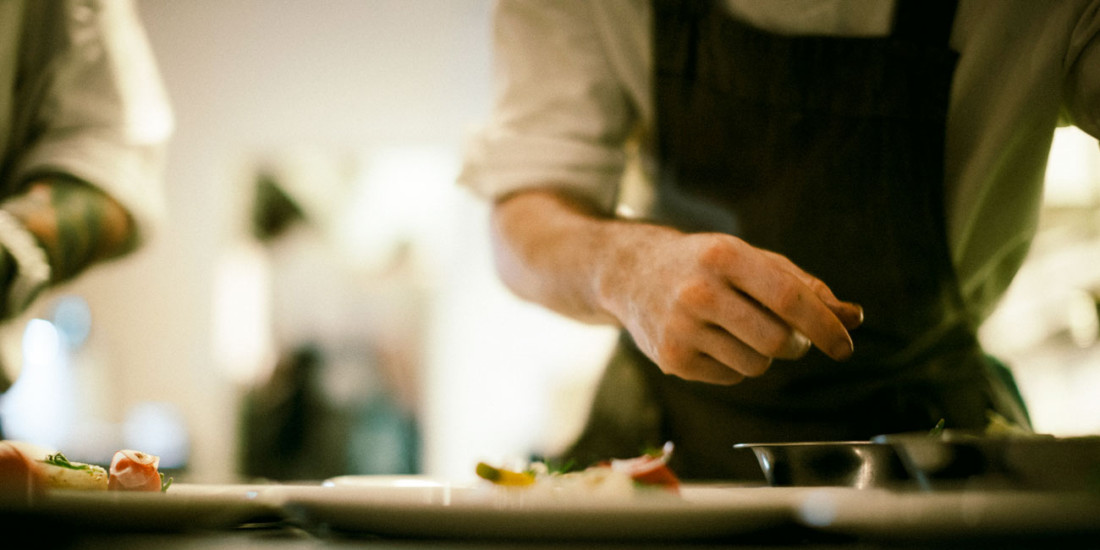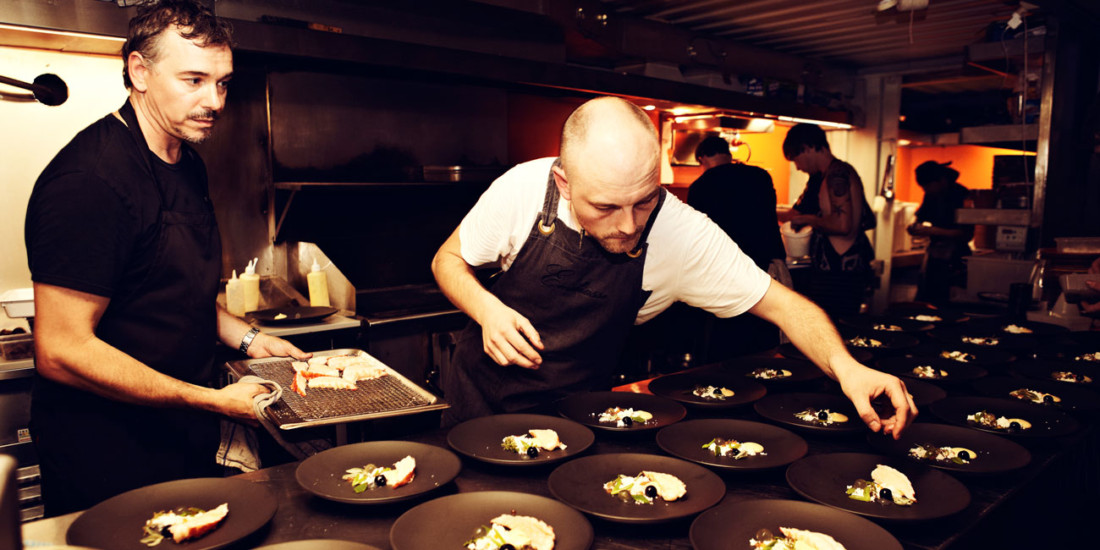Mark Bashinsky, chef, ARIA Brisbane
Always be prepared and open-minded to new ideas ...
Imagine having a private tour of Tokyo’s famous Tsukiji Fish Markets, being greeted by crates full of freshly plucked mushrooms to sautée or being treated every day to 9 score wagyu fillet and sirloin as a commonplace experience. For any homecook – or indeed one with a healthy appetite – this would be a memorable experience. But for a chef, no doubt it’s the stuff dreams are made of. This was the recent experience of local boy Mark Bashinsky, who took out the 2014 HOSTPLUS Hospitality Scholarship supported by Melbourne Food and Wine and was rewarded with a whirlwind work-experience jaunt across the continents. Mark took a break from his day job at ARIA Brisbane to hop in kitchens in Paris, San Francisco and Tokyo. With the next round of scholarship applications closing on April 10, The Weekend Edition checked in with Mark to find out more about his foodie adventures.
You recently returned from an international work experience adventure after taking out the HOSTPLUS Hospitality Scholarship last year. What were some of your personal highlights from the trip?
Being awarded the opportunity to travel around the world for three weeks and stay in three countries was a highlight in itself! I choose Benu in San Francisco, Septime in Paris and Restaurant Ryuzu in Japan – three different locations each with their unique styles and approaches to cooking and restaurant operations. They have each achieved Michelin stars on different levels (ie one star, two stars and three stars) and with many people being influenced by the Michelin guide as such an important international scaling, I was interested to see all three levels at work, as well as of course experience the different cultures at the same time.
What was the greatest lesson you learnt on the trip?
Always be prepared and open-minded to new ideas and flavours, no matter how small they may seem. For example, chef Ryuta Iizaka handing me a live prawn to eat at 4:00 am during my personal tour of the Tsukiji Fish Markets …
Any cooking fails or mishaps youneed to confess to?
I knew one of the biggest challenges leaving Australia was going to be the language barrier. I guess that’s a good reason to start in San Francisco, to ease myself into the travelling lifestyle. It was going to be an interesting and somewhat confusing first couple of days in each country. I knew what I had to do but even the simple things – from reading menus to finding my way around – all seemed foreign to me. I was also interested in meeting the chefs, talking to them about what drives them and how they got to where they are today. This was again easier said than done, but I owe a lot of credit to my Google translator.
What can you tell us about the diverse ingredients you worked with across America, France and Japan?
I came away with an even greater understanding of the importance of respecting, handling and cooking seasonal produce. Beginning in San Francisco at Benu, I learnt how labour intensive some dishes were, like the lobster xiao long bao – from the stock to the filling to head chef Corey Lee hand rolling each one every day. In Paris, being spoilt with crates of ceps ready to be prepared and sautéed for service to the freshly plucked ducks left completely whole to render and roast each night. In Japan, I was amazed at the arrival every day of 9 score wagyu fillet and sirloin and how it was handled and cooked to perfection every time by the extremely self-disciplined chefs at Ryuzu.
How do you think the Australian food scene compares?
In Australia, we sometimes struggle with supply and demand for produce, mainly due to our harsh and ever-changing climate. I definitely came back with more appreciation for the farmers and growers back home who on a yearly basis have to deal with bushfires, floods and droughts. Being situated away from many other countries, our access to some varieties of produce is very limited. Whereas in Japan, for example, many of the seasonal produce is easily shared with France and the United States.
What was the first thing you did when you landed back on Australian soil?
I was welcomed back home with a home-cooked barbecue feast and shared a few overseas stories with friends. There wasn’t much time to stop as my first shift back was the next day – Melbourne Cup!
You work at ARIA Brisbane, what does a typical shift involve for you?
In general, it begins early around 7:00 am and finishes close to 11:00 pm. Plenty of coffee to start, as the deliveries begin rolling in. A solid prep list needs to be complete before staff lunch at 11:00 am. Lunch service finishes at 2:30 pm and is followed up by finishing small jobs and staff dinner serviced at 4:00 pm. Orders are done before service starting at 5:30 pm and finishing the last table at 10:30 pm. Throughout the day, the kitchen is broken down and cleaned four times.
If you could cook a meal for any person in the world, who would you choose and what would you make?
I could give a long list of inspirational culinary stars like Alain Ducasse, Daniel Humm, David Chang or Aaron Franklin, but I’m more than happy to cook a meal for my family. As we’re spread out across four states, the satisfaction of bringing everyone together for a home-cooked meal outweighs any celebrity. Anything from a slow-cooked secondary cut like brisket to a hand-caught pepper mud crab would please them all.
Only a Brisbane local would know … Noosa is so popular because of the national park and beaches. Green Beacon Brewing in Teneriffe is the perfect place to start your Sunday session. The further north you travel, the better the fishing is and the more thirst-quenching the beer becomes! The price of a cup of coffee should never cost more than a beer. The weather is the best reason to live in this state.
Images 3 and 4 courtesy of Daniel Mahon, image 5 courtesy of Amanda Fordyce.





